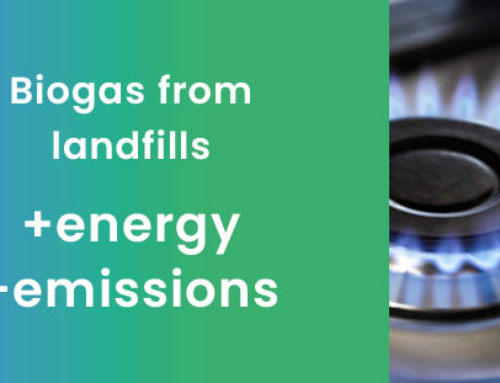An energy carrier can accumulate energy to release it at a later time but cannot be considered as a real primary source of energy.
In fact, the accumulation of energy in an energy carrier is determined by the role of another primary or secondary energy source. According to the laws of thermodynamics, the process of energy transfer and accumulation in an energetic vector implies a partial loss of the initial energy.
Pure molecular hydrogen (H2) is a clean fuel ([1]).
Naturally, both in direct combustion and in use in fuel cells, and in other energy processes from hydrogen, the correct assessment of the environmental impact of hydrogen cannot disregard polluting emissions and environmental impacts deriving from the entire process for its production [LCA ([2])], starting from the primary energy sources used as well as from the technology used for primary energy production.
SINCE THE HYDROGEN IS NOT AVAILABLE IN THE FREE STATE IN NATURE, EXCEPT IN A SMALL QUANTITY, IT IS IN FACT CONSIDERED A CHEMICAL ENERGY VECTOR ABLE TO TRANSFER ENERGY IN MOLECULAR FORM AND MUST BE PRODUCED STARTING FROM OTHERS COMPOUNDS ([3]), WITH PROCESSES THAT REQUIRE ENERGY ([4]).
In fact, we speak of:
GRAY HYDROGEN when produced using fossil natural gas (CH4) in a reforming process, polluting due to the release of CO2 into the atmosphere, but relatively cheap;
BLACK HYDROGEN when it is produced from fossil coal in a gasification process, extremely polluting due to the release of CO2 into the atmosphere, but still relatively cheap;
BROWN HYDROGEN when produced using lignite of fossil origin in a gasification process, very polluting due to the release of CO2 into the atmosphere, but so far relatively cheap;
BLUE HYDROGEN when produced through the use of fossil natural gas (CH4) with permanent CO2 capture and storage systems, therefore less polluting than the previous one but more expensive;
GREEN HYDROGEN when produced through electrolytic processes of water (H2O) using electricity from renewable sources in a process with low environmental impact but still very expensive;
PURPLE HYDROGEN when it is produced from water (H2O) using the energy produced by nuclear power plants.
When the ‘hydrogen economy’ is born as derived from renewable energy sources such as hydroelectric, wind, solar or nuclear fusion, an almost clean and almost environmentally friendly energy distribution system is obtained (9). of the greenhouse gas CO2, even if the water vapor produced is also a greenhouse gas and the NOx are pollutants and irritants as well as components of ‘acid rain’.
However, the search for alternatives in the production of hydrogen, which are technically possible and economically convenient, is constantly developing. In fact, many new technologies based on the use of solar energy ([5]), on chemical processes (adiabatic UT-3 cycles, ZnO-Zn cycles, mixed ferrite cycle, SI cycle, etc …), on the use of wind energy, on photo-biological processes ([6]), on the enzymatic conversion of glucose and other sugars ([7]), on the recovery of residual gases from other industrial processes, on radiolysis ([8]), etc …
Other very important problems and technical difficulties that have hindered the advent of the “hydrogen economy” up to now concern storage and transport.
Just think that the most common way to store hydrogen – and in fact the only way to do it efficiently – is to compress it to about 70 MPa of pressure; the energy needed to compress the gas has proved over the years to be one of the key problems that are difficult to solve in the idea of establishing an economy based on hydrogen.
Furthermore, thanks to its lightness, hydrogen tends to slowly escape from any type of its containment means (accidental hydrogen spills ([9])), making storage but also pipeline transport complex ([10]).
The problems related to any hydrogen leaks concern safety since hydrogen is extremely flammable: even if it is light and tends to rise quickly into the atmosphere, it is never possible to exclude accidental triggers where the oxidizer is oxygen in the air.
It is clear that the challenges to be faced today are great, as reported by the International Energy Agency (IEA) which has identified three main categories of problems to be solved in order for hydrogen to play an important role in energy systems:
currently, many applications for ‘green hydrogen’ are not competitive without public support and in the absence of commitments with reasonably long prospects from governments;
the complexity of the value chain and the need to develop adequate infrastructures for transport and distribution must be addressed;
shared and internationally accepted standards and regulations need to be defined.
It will be the shared and coordinated effort between different countries and production sectors that will make the difference.
References:
(1) H2 is easily flammable so it hardly produces unburnt products. In any case, even if incomplete combustion occurs, only elemental or molecular hydrogen, completely non-toxic, would be released into the surrounding environment. In fact, the only possible polluting emission deriving from the combustion of hydrogen concerns thermal NOx (this condition can potentially be reached in direct combustion but is practically never reached in fuel cells).
(2) LCA: Life Cycle Assessment
(3) The main compounds for the production of hydrogen are in fact two raw materials: methane (CH4) and water (H2O).
(4) The production of hydrogen in a thermodynamically convenient way, that is, in order to obtain a net gain of energy in its production-use cycle is a big problem to overcome. The hydrogen economy based on renewable energy does not eliminate doubts and perplexities about the thermodynamic convenience of the process and even today the only “economically sustainable in thermodynamic terms” hydrogen production system remains the reforming of fossil raw materials.
(5) concentrated solar energy with thermochemical cycles based on the reduction of metal oxides which result in the splitting of water (H2O) into hydrogen and oxygen
(6) which involve the splitting of water (H2O) into its hydrogen and oxygen components
(7) glucose C6H12O6
(8) radiolysis consists in the separation of water molecules (H2O) through collision with high-energy particles produced in a nuclear reactor
(9) this was reported in a paper published in the US journal “The Sciences” by a group of scientists from the California Institute of Technology
(10) in the hypothesis that it is ‘significant quantities’ of gaseous hydrogen (H2) that escape from the tanks and pipeline systems for the transport of hydrogen, it must be considered that – by interaction with ultraviolet radiation – radicals could form free (H +) and (H.) in the stratosphere. These free radicals could later act as catalysts for damage to the ozone layer, exacerbating the so-called “hole in the ozone layer”. However, there is no empirical evidence in the literature on the effects of this process.


